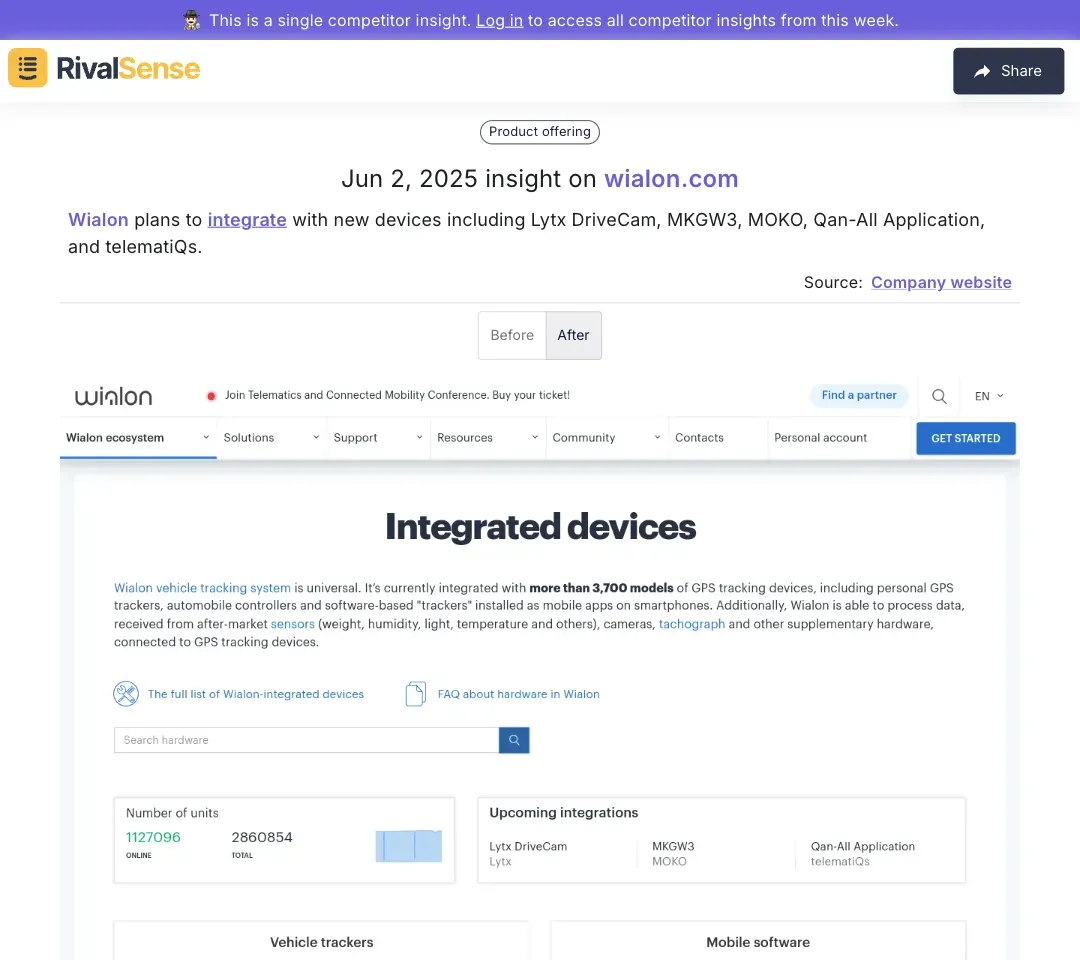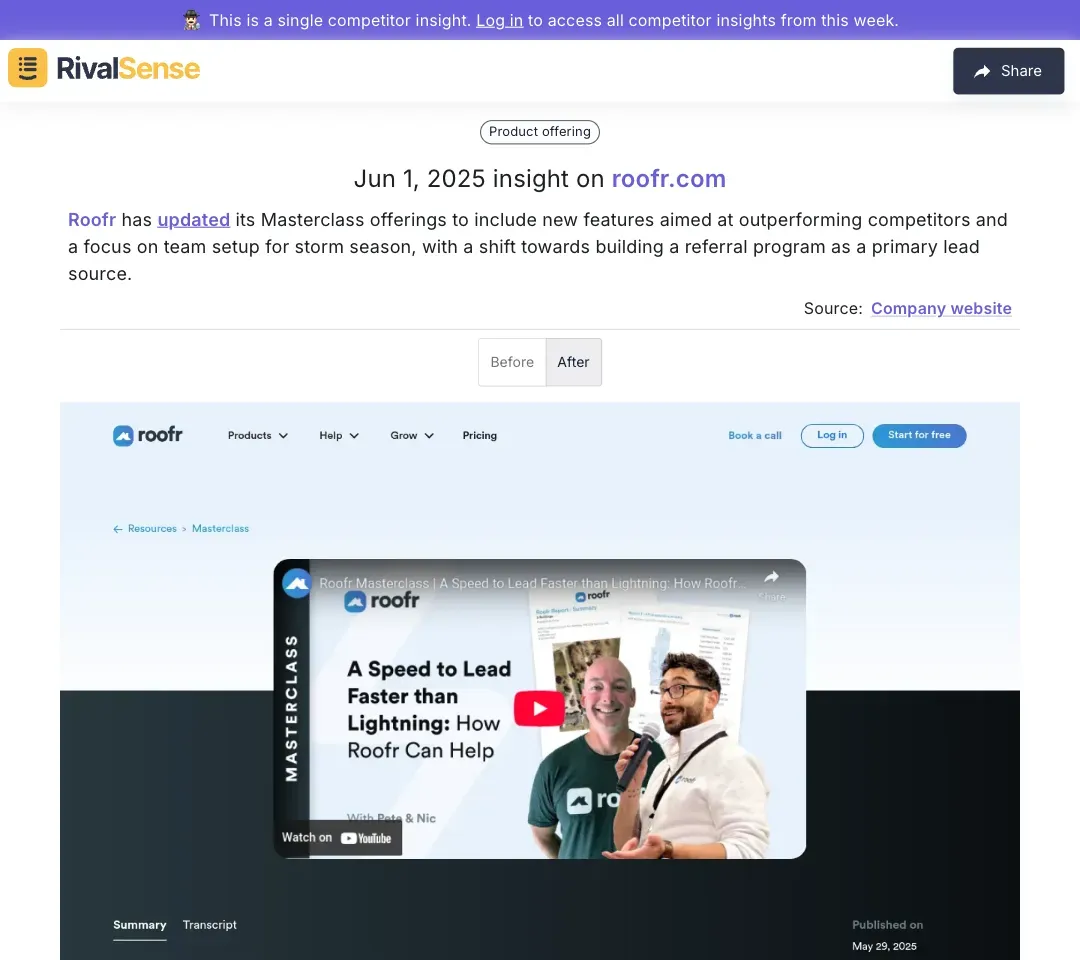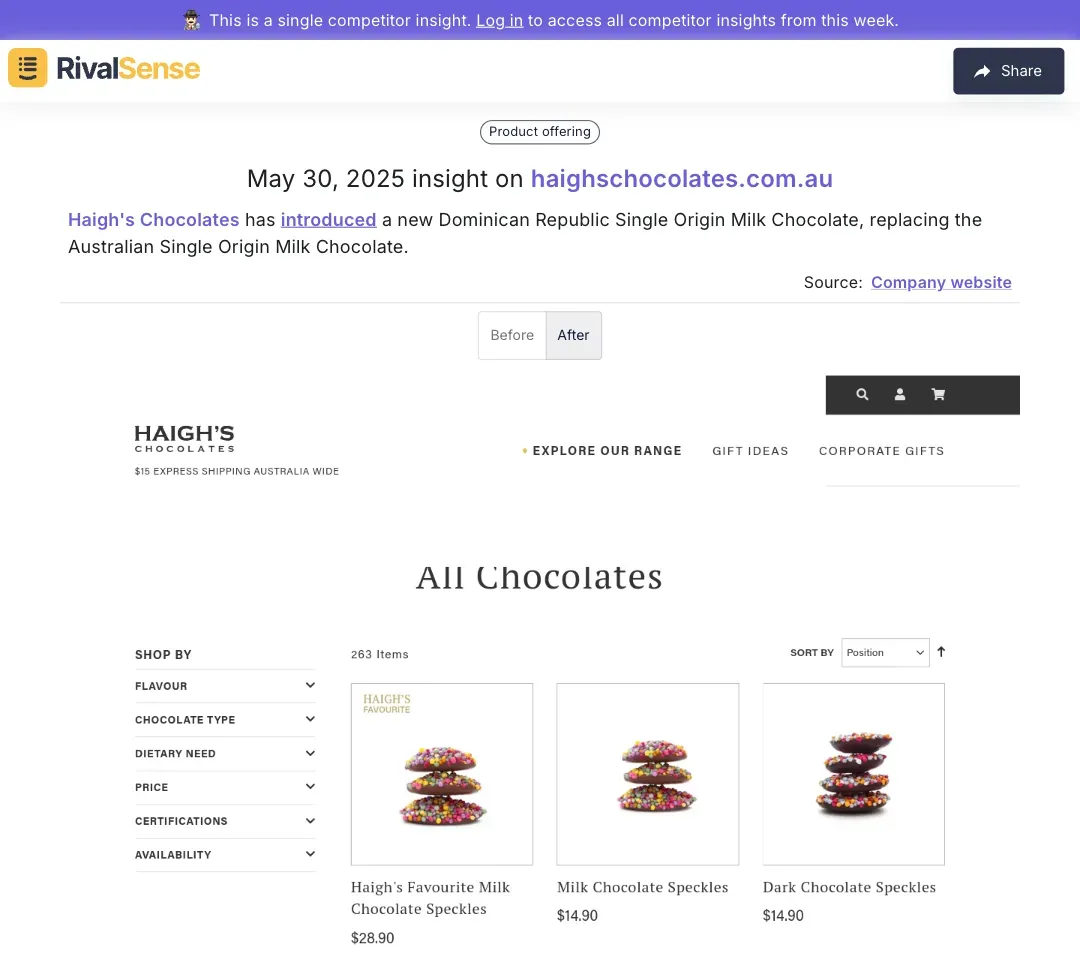Unlocking Competitive Advantage: Strategies and Real-Time Insights
In the ever-evolving landscape of business, maintaining a competitive advantage is not just beneficial—it's essential for survival and growth. A competitive advantage allows a company to outperform its rivals, attract more customers, and achieve superior profitability. But what exactly constitutes a competitive advantage, and how can businesses cultivate and sustain it? This blog post explores the concept of competitive advantage in business strategy, its sources, and how tools like RivalSense empower companies to stay ahead.
Understanding Competitive Advantage
Competitive advantage forms the bedrock of sustainable business success in crowded markets. It represents the unique edge that enables organizations to deliver superior value to customers while outperforming rivals. According to Investopedia, competitive advantage can stem from various factors including cost structure, branding, product quality, distribution networks, intellectual property, and customer service excellence.
Sources of Competitive Advantage
Harvard Business School Online identifies five foundational sources businesses leverage for competitive differentiation. These strategic pillars help organizations create unique market positions that competitors struggle to replicate. Understanding these sources provides actionable frameworks for developing your own competitive moat:
-
Product Attribute Differentiation: Offering distinctive features or superior quality that creates customer preference. For example, luxury brands differentiate through craftsmanship and exclusivity.
-
Customers’ Willingness to Pay: Aligning pricing with perceived value through premium positioning or cost leadership.
-
Price Discrimination: Implementing segmented pricing (e.g., student/senior discounts) to maximize market coverage.
-
Bundled Pricing: Creating package deals that increase perceived value while boosting average order size.
-
Human Capital: Investing in talent development and culture to drive innovation and operational excellence.
Building and Sustaining Competitive Advantage
Developing lasting competitive advantage requires systematic approaches grounded in market realities. Michael Porter's three generic strategies provide proven frameworks for establishing market leadership:
✅ Cost Leadership: Becoming the industry's lowest-cost producer through operational efficiencies
✅ Differentiation: Creating unique value through innovation, branding, or customer experience
✅ Focus: Dominating niche markets with specialized offerings
Real-World Competitive Moves in Action
Tracking actual competitor activities provides invaluable intelligence for strategic planning. Recent examples demonstrate how businesses execute competitive differentiation:
Wialon's Ecosystem Expansion

Wialon plans integration with new devices including Lytx DriveCam and MOKO, expanding compatibility.
Why it matters: Monitoring product integrations reveals how competitors broaden their ecosystem to capture adjacent markets—intel crucial for anticipating market shifts.
Roofr's Educational Platform Enhancement

Roofr updated its Masterclass with storm-season features and referral program focus.
Why it matters: Tracking educational content updates uncovers how competitors build customer loyalty while shifting lead generation strategies.
Haigh's Product Line Innovation

Haigh's introduced Dominican Republic Single Origin Chocolate replacing Australian variant.
Why it matters: Observing product substitutions reveals ingredient sourcing strategies and responsiveness to consumer trends.
How RivalSense Strengthens Competitive Strategy
Gaining real-time competitor intelligence transforms strategic decision-making from reactive to proactive. RivalSense delivers comprehensive monitoring across 80+ sources including websites, registries, and social platforms. The platform enables:
🔍 Weekly competitive intelligence reports covering:
- Product launches and feature updates
- Pricing strategy shifts
- Partnership announcements
- Regulatory compliance changes
- Executive movements
📈 Actionable insights for strategic advantage:
- Anticipate market disruptions through product tracking
- Benchmark pricing strategies against competitors
- Identify partnership opportunities before competitors
- Mitigate risks from regulatory changes
Conclusion
Competitive advantage demands continuous refinement through market awareness and strategic agility. By combining Porter's frameworks with real-time competitor intelligence, businesses can identify differentiation opportunities and respond to threats faster. Tools like RivalSense transform market data into actionable strategies—helping you consistently deliver unmatched value.
Ready to transform your competitive strategy?
Try RivalSense for free at https://rivalsense.co/ and get your first competitor report today!
📚 Read more
👉 Crafting a Market Intelligence Framework: A Step-by-Step Guide for Business Leaders
👉 Decoding Competitor Sales Tactics in B2B Dropshipping
👉 How De'Longhi's New Espresso Model Spurred Competitor Innovation
👉 Competitor Insight Templates: Strategic Response Frameworks
👉 5 Common Roofing Software Mistakes to Avoid for Better Customer Segmentation
